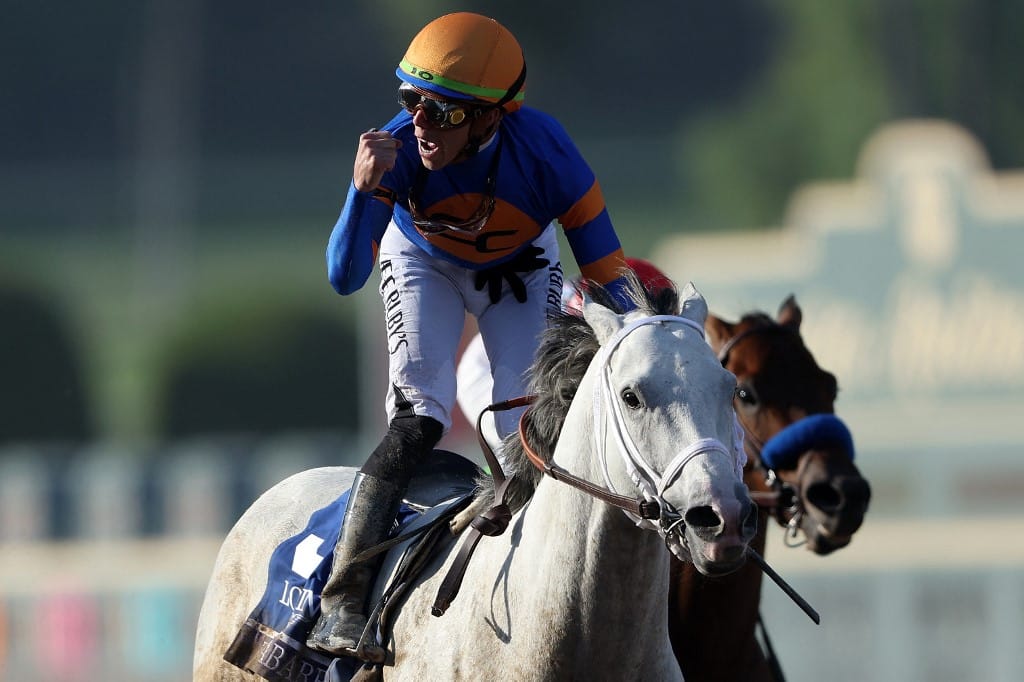When people go to the horse track, off-track betting at top-rated sportsbooks or watch the Triple Crown races on television, the variety of ways those individuals pick horses is astounding. Luck plays a part in any horse race, but relying on lady luck comes with downsides.
For those who want to elevate their ability to pick winners at the track to a level of certainty that they feel reasonably comfortable with any selection compared to the color of the horse, odd or even numbers, favorites, or extreme longshots, this article will help.
Tipsheets Can Be Useful at the Race Track
Most tracks have two to four tip sheets that will encompass all the races on the day you went to watch the ponies race. If you are a novice or have limited experience with these products, ask the person selling them, “What sheets do horse bettors like?” Most will provide an honest answer. Otherwise, just look at the amount of information on the sheet, the more the better.
Daily Racing Form and Others Offer Quick Information
Forever, the Daily Racing Form paper was the Bible of Horse Racing. With more competition, especially since there are more you can download on your phone, it might be a bit of a stretch, but any are useful.
Let’s be clear. The information can be overwhelming, but if you stick to a few of the basics and learn those first, you will develop the methods that work best for you by trial and error.
Let’s dig in.
1) Understanding the Odds and Compare Them to the Current Odds
These race helpers will show you what is called the “Morning Line Odds” (the original odds of the race.)
With the next race at hand, compare those odds to the latest figures and see who has moved up or down. Possibly, the favorite has gone from 4/1 odds to 5/1 and what was the original 7/1 third choice is now 9/5 and the favorite.
The next step is understanding possibly why.
2) Length of Race and Speed Rating
Your sheets will tell you if the race is five furlongs or maybe a mile (8 furlongs to a mile).
In your form, you can look for how each horse has run in their last four to five races and you should know if the races are the same in distance or longer or shorter. This could signal an owner/trainer is unsatisfied with the horse’s results and is attempting to determine a better solution. This is typically a Pass for a bet.
Next, for each horse and race, it will show you how a horse ran from start to finish and his exact placement in the race at four/five different locations from start to finish.
Here you will find that some horses run better from the lead, others sit behind the leaders and try to make a late move (referred to as stalkers), or some are just closers who can win or finish in the money regularly with a late charge. This is very important to know based on the horse and distance of the race.
Lastly, Speed Ratings are listed, which explains how fast a horse can run. This is a useful tool to learn how to use, as it could explain why the rating keeps going up, how a horse could peak for a top effort, or the reverse, where a decline could mean finishing out of the money.
3) Lifetime Record
This is used for nothing more than the level of success a horse has shown in all races. It could look like this:
10 – 2-3-2
This shows a horse has run 10 races with 2 Wins, 3 Places and 2 Shows. That is the consistency you want on a wager. Compared to this:
7 – 2-0-0
This horse’s record shows he either has it or nothing. Not really comforting.
4) Purses and Jockeys
When you have your horse racing sheets, look at all the race purses.
The higher the purse, the better the quality of the race. You will have better horses and jockeys that should get your attention. The two races that have small purses with low-speed ratings and mediocre talent might mean a food or drink break.
You can look up jockey stats at a track, but that might be too much to start. Instead, that day, follow what jocks are having the best success. Maybe one jockey has two wins and two places with two races left on the card. If he has a couple of good horses he’s saddled on, that combination could lead to winning tickets.
Above all, have fun, make it enjoyable and you can tell this joke that always draws laughter. The last time I was here, I bet a favorite at 5/2 (odds) and he came in at quarter after 3:00.








